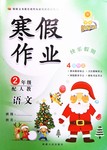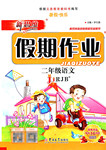题目内容
She was standing by an electric heater and her nightdress _____ fire.
A. caught B. set C. took D. had
A

 学练快车道快乐假期寒假作业系列答案
学练快车道快乐假期寒假作业系列答案 新思维寒假作业系列答案
新思维寒假作业系列答案 D
Wilma was born on June 23, 1940 in St Bethlehem, Tennesse. By the time she was 6, Wilma Rudolph was given metal braces (支架) to aid her in walking. She started receiving treatment with help from her family. A few years later, she walked without any assistance into the church.
When she was in junior high, she joined the basketball team. She finally made an appeal to compete in games again and when her wish was finally permitted, she amazed everyone by leading the team to an undefeated season and the state championships. Though they lost the championship title in the end, Wilma Rudolph earned the attention of the women’s track coach,Ed Template at Tennessee State University and was invited to join the "Tigerbelles".Her efforts paid off as she turned out to be so good that the Tigerbelles invited her to join them in the national Olympic team trails. Not only did she make it into the team, but she won a bronze medal in the 4×100 m relay at the 1956 Melbourne Olympics. Four years later, Rudolph set a world 200 m record (22.9 seconds) at the 1960 US Championships. At the Rome Olympics in 1960, she competed in the 100 m, 200 m and 4×100 m relay, and equaled the world record of 11.3 seconds in the semifinals (半决赛) of the 100 m. She won the final by three metres in 11.0 seconds, but it was not accepted as a world record.
Wilma Rudolph’s extraordinary achievements in Rome made her a darling of the European press who gave her the nickname "The Black Gazelle (羚羊)" and "The Black Pearl". She also became the first woman in American history to win 3 gold medals in the Olympics and was crowned "the Fastest Woman in the World", Wilma Rudolph’s spirit inspired people such as Jackie Joyner Kersee and Florence Griffith Joyner who became the next woman to win 3 gold medals.
【小题1】What problem did Wilma face according to Paragraph 1?
| A.Not being able to speak. | B.Not being able to walk. |
| C.Losing her sight. | D.Losing her hearing. |
| A.the 4×100m relay at the 1956 Melbourne Olympics |
| B.the semifinals of the 100m at the Rome Olympics |
| C.the 200m at the 1960 US Championships |
| D.the final of the 100m at the Rome Olympics |
mentioned in the passage?
| A.One. | B.Three. | C.Four. | D.Five. |